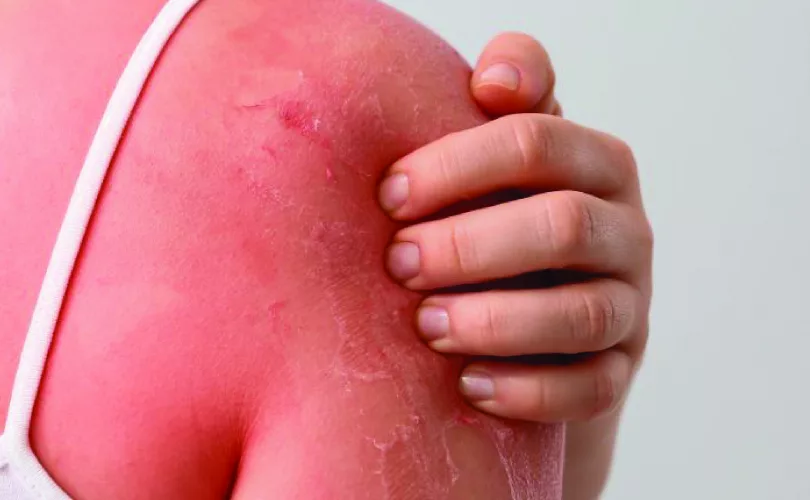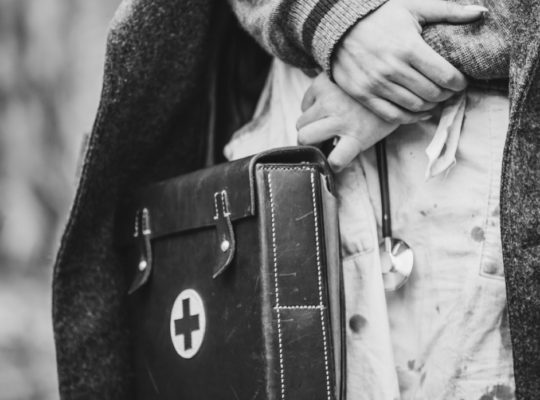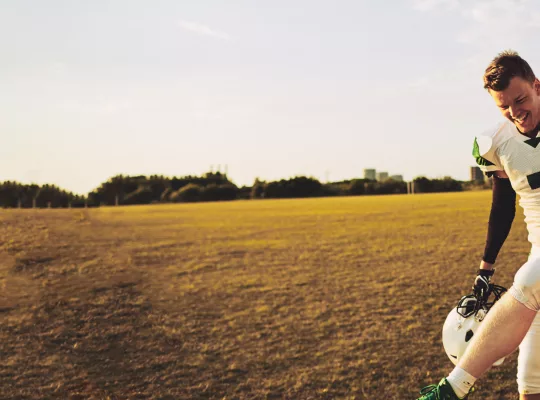The answer lies in how the body repairs the damage caused by overexposure to the sun. The ultraviolet (UV) rays from the sun harm the skin’s outer layer, causing cells to die. To protect itself, the body sheds the damaged skin, leading to that familiar peeling.
In fact, peeling is part of the natural healing process. It’s the body’s way of replacing injured cells with new, healthy ones. Although it may seem inconvenient, it’s an important step in recovery.
In the following sections, we’ll dive deeper into why this happens, how you can relieve the discomfort, and what steps to take to avoid peeling altogether.
What Actually Causes Sunburn?
Generally speaking, sunburn is caused by overexposure to the sunlight – specifically ultraviolet radiation – which when projected onto our skin for extended periods of time can cause reactions.
The most common reactions are the overproduction of melanin, which is what causes our skin to darken (or ‘tan’), and burning – which is an inflammatory reaction caused by the production of histamines.
How Bad Is Most Sunburn?

While it obviously varies depending on the person, their skin color, and their particular disposition, most people only suffer from minor sunburn – generally within the first or second degree of the burn scale.
Most sunburn falls under the classification of first degree burns – usually resulting in discomfort, soreness, itchiness, and some minor discoloration.
Second degree burns occur when someone has moderate to severe sunburn, and this can result in inflammation, swelling of the affected areas, and deeper tissue damage.
Why Do We Peel After Being Sunburned?
Once we have been sunburned, and the skin has had a chance to settle down a little bit over the following days, it is a common occurrence for the skin to then peel.
This is caused by a perfectly natural healing process, wherein the regeneration of new skin cells beneath the sun damaged outer layer causes the burned, dried up skin to flake and peel off. But what is actually happening, and why does it occur?
DNA Damage
When our bodies are hit with UV radiation, the rays are so strong that they actually penetrate the skin and cause direct damage to the DNA within our cells, affecting the layer of skin beneath.
These damaged cells are then put under stress, and caused to either mutate – in the form of skin cancers and other problems – or die off completely.
When the skin starts to peel, this is our body’s natural response – shedding these dead and dying skin cells to make way for functioning new ones.
How Fast Do We Peel?
Generally speaking, peeling usually begins after a period of two days – at least with minor sunburn – but the length of time this will take to stop depends entirely on the individual and their body’s healing response.
What Does Skin Peeling Look Like?
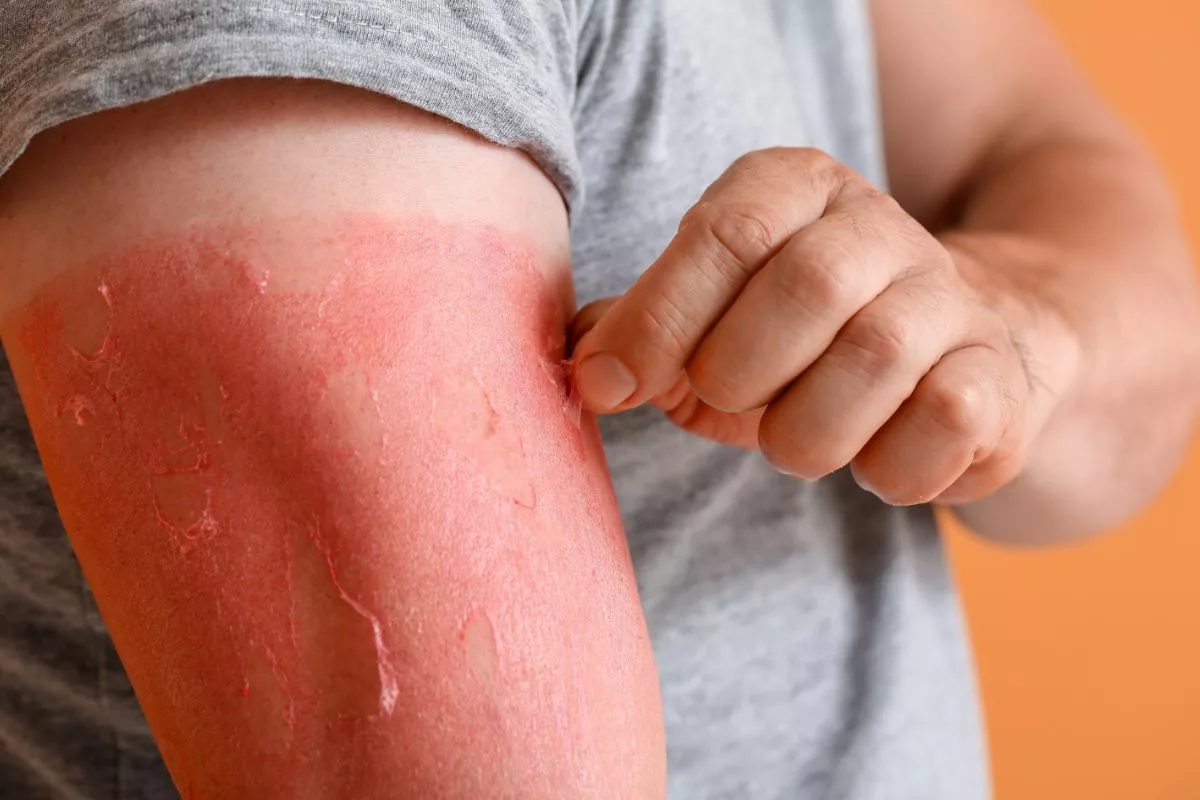
Depending on the severity of the peeling sunburn, peeling will usually begin as scattered, dry patches of skin – which might also be accompanied by small blisters in some cases.
Most skin peeling will be mild – as are most forms of sunburn – however, in worse cases, blisters can occur, and this represents deeper damage to the skin that will take longer to dry out and heal.
Blisters themselves are caused by formations of pus beneath the skin, something caused by the damage the sun has caused.
Should You Peel Your Sunburn?
As with any form of scab or skin tag, it can be tempting to pick and peel your dried sunburn once the healing process has begun, but this is generally not recommended.
The skin is likely still tender, and the new skin underneath is delicate and sensitive, which means that you are likely to experience pain if you decide to try and help the process along.
Peeling at skin that is not ready to come off yet can also hinder the healing process, as well as potentially cause damage to the healthy skin surrounding the peeling sunburn area.
How To Prevent Sunburns From Peeling?
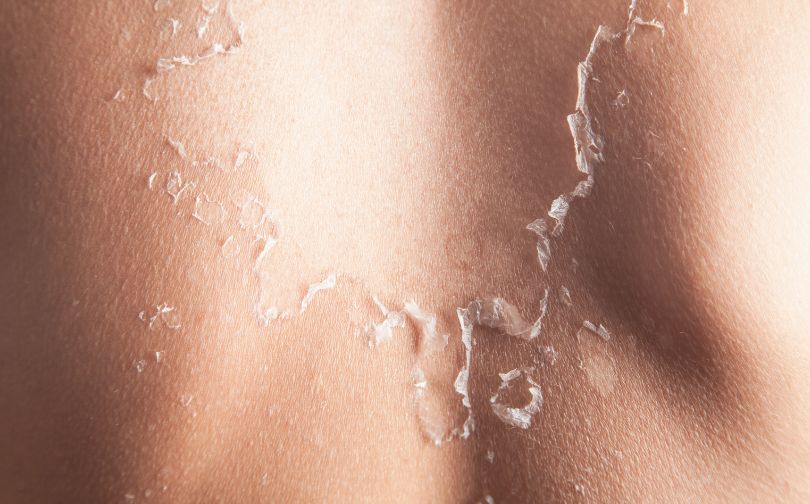
Of course, there are certain things you can do to care for your skin, even if you have already been caught out on a particularly hot day. One of the best ways to stay prepared is by keeping a Pool First Aid Kit stocked with essentials like aloe vera, cooling compresses, and hydrating lotions to help soothe sunburned skin immediately after exposure.
Cool Your Skin
This is the most important thing, and is important if the inflammation is to die down and stop hurting.
There are many ways you can cool down a sunburned portion of skin, including using cold compresses, wrapped bags of ice, or towels wet with cold water. All of these can be effective methods to make your skin feel better.
Keep Skin Moist
The peeling process is a side effect of your skin being burned and dried out, and as such, ensuring your skin’s moisture level is important if you want to avoid peeling.
For this you can use any number of water based moisturizing products – especially those containing glycerin, which is known for its water-drawing properties. This will help to keep your skin moist, and will fight off the peeling process as much as is possible for your specific sunburn.
Encourage Healing
You also need to encourage the healing process as soon as possible. For this you want something like aloe vera – a cactus-derived product that has antibacterial properties, and which can stimulate the healing process more quickly.
How To Treat Peeling Once It Has Started?
Of course, depending on the sensitivity of your skin, the sunburned area might have started to peel more quickly. If this is the case, then there are some things you can do to soothe the skin and encourage the healing process.
Colloidal oatmeal baths are a good way to relieve stinging, itching, and the soreness associated with sunburned skin. Oatmeal has anti-inflammatory properties, and as such will encourage the layer of skin to heal more quickly too.
Similarly, you could also try soy moisturizers – all of which are rich in amino acids – and these are good for encouraging the regeneration of protein in the skin, and the production of hyaluronan, a natural lubricant produced by our bodies to heal skin.
What Are the Tips to Prevent the Sunburn?
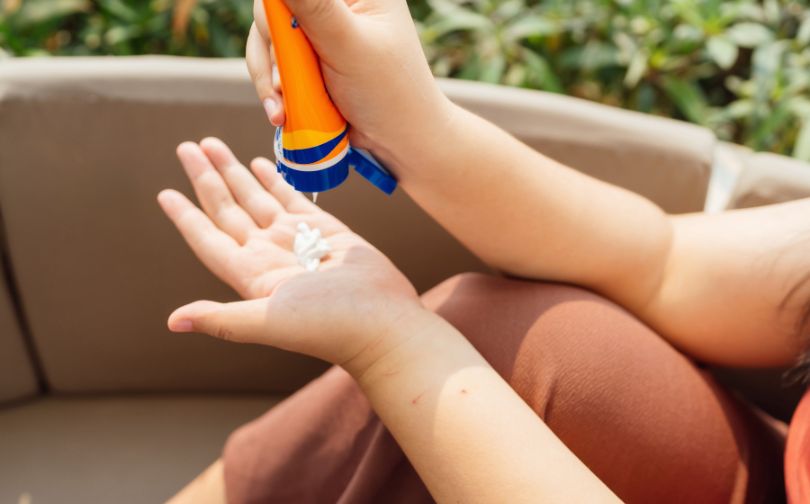
Sunburn prevention is essential for maintaining skin health and reducing the risk of skin damage and cancer. Follow these practical tips:
- Use Sunscreen ProperlyChoose a broad-spectrum sunscreen with an SPF of 30 or higher to guard against both UVA and UVB rays and protect the top layer of skin. Apply generously, using at least one ounce for all exposed skin, and ensure application takes place 15-30 minutes before heading outside. Reapply every two hours, especially after swimming or sweating, to maintain protection.
- Wear Protective ClothingOpt for clothing that covers most of your body, such as long-sleeved shirts, pants, and wide-brimmed hats, to minimize sun exposure. Clothing with a high Ultraviolet Protection Factor (UPF) can offer added defense against harmful rays. Sunglasses that provide 100% UV protection are essential to protect your eyes from sun damage, particularly during prolonged sun exposure.
- Seek Shade and Avoid Peak Sun Hours: Stay in shaded areas, particularly between 10 a.m. and 4 p.m., when the sun’s rays are most intense. Plan outdoor activities during early morning or late afternoon hours to reduce UV exposure.
- Be Mindful of Reflective Surfaces: Surfaces such as water, sand, snow, and concrete can reflect UV rays, intensifying exposure. Even in shaded areas, these surfaces can increase your risk of sunburn, so take extra precautions when near them.
- Consider Skin Sensitivity: Certain medications can make your skin more sensitive to the sun. If you are on prescription drugs, consult your dermatologist to understand if additional sun protection measures are needed.
Final Thoughts
And there we have it, everything you need to know about sunburned skin, and why it peels when it starts to heal. It’s true that, even despite our best efforts, sunburn is still incredibly common, and can often happen when we least expect it.
FAQs
Are There Any Home Remedies to Soothe Peeling Skin?
Yes, you can relieve peeling skin using natural methods. Aloe vera gel provides soothing, cooling relief. Cool baths with baking soda or oatmeal can reduce irritation. Moisturizing with fragrance-free lotions keeps skin hydrated, while cool compresses offer comfort. Avoid hot showers and harsh soaps to prevent further irritation.
Can Peeling Sunburned Skin Lead to Infections?
Peeling sunburned skin may lead to infections if handled improperly. Exposed skin is more vulnerable to germs. Signs of infection include swelling, pus, or yellowing blisters. Avoid peeling skin manually and keep the area clean and moisturized to reduce the risk of infection and promote healing.
What Spf Level Is Recommended to Prevent Sunburn?
To prevent sunburn, use a broad-spectrum sunscreen with at least SPF 30. This protects the skin from harmful UVA and UVB rays. Reapply every two hours, especially after swimming or sweating, to maintain protection and reduce the risk of sunburn and long-term skin damage.
When Is Medical Intervention Necessary for Sunburns?
Medical attention is needed for severe sunburns showing signs such as blisters covering large areas, high fever, chills, nausea, or infection symptoms like swelling and pus. These could indicate sun poisoning or dehydration, which requires professional care to avoid further complications.

